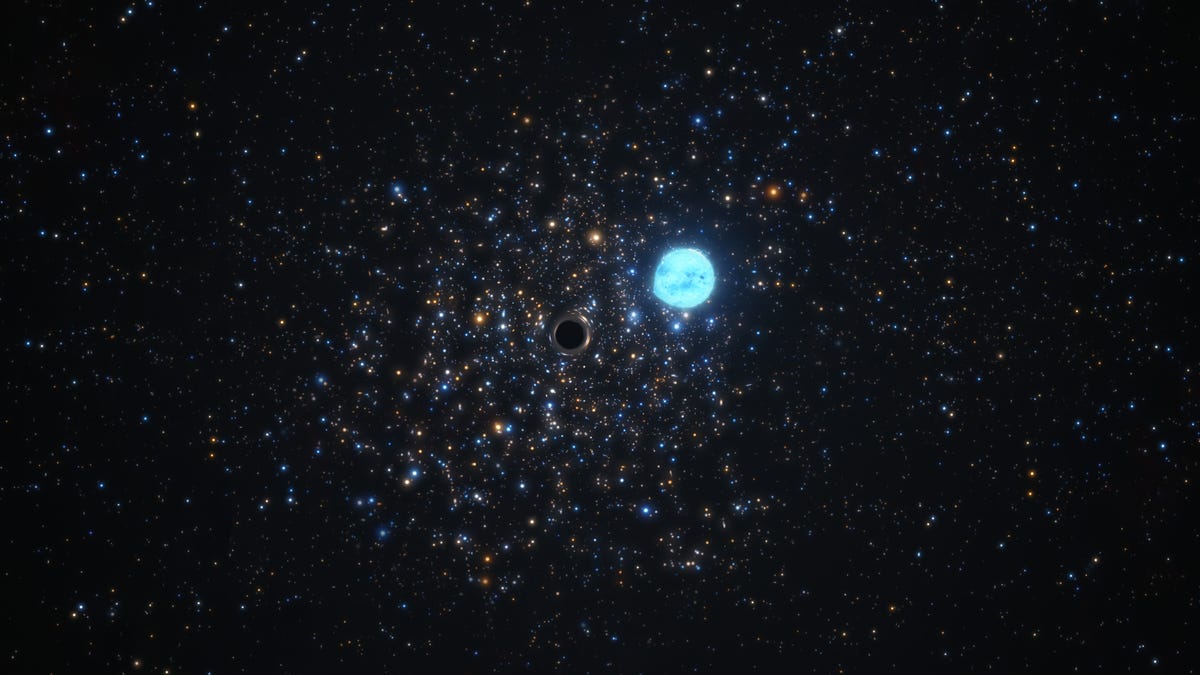Astronomers discover a hidden black hole by spotting jiggles in a nearby star
For the first time, a new method has been used to discover a small black hole beyond the Milky Way.

This artist's impression shows a compact black hole 11 times as massive as the sun and the five-solar-mass star orbiting it. The distortion of the star's shape is due to the strong gravitational force exerted by the black hole.
Astronomers have developed a new method to spot giant, invisible monsters lurking in deep space.
For the first time, a small black hole was discovered by observing how it affects the motion of a nearby star. The gravity of black holes is so strong that not even light can escape them, meaning they are essentially dark voids in space and literally invisible with traditional optics.
Scientists look for black holes by searching for evidence of their effects on their environment and other nearby objects. This could be the glow emitted as they suck up matter or gravitational waves that are sent rippling across the universe when a black hole collides with a massive neutron star.
Most smaller black holes aren't creating a glow or collision though, so astronomers need to look for less obvious indicators that one is present in a distant star system.
"When they form a system with a star, they will affect its motion in a subtle but detectable way, so we can find them with sophisticated instruments," explains Stefan Dreizler, from the University of Göttingen in Germany, in a statement.
Dreizler is part of an international team that used the European Southern Observatory's Very Large Telescope in Chile to find a black hole in the star cluster NGC 1850 in the Large Magellanic Cloud galaxy, about 160,000 light-years away. It's believed to be the first time a black hole beyond our galaxy has been discovered by noting its influence on a nearby star.
"Similar to Sherlock Holmes tracking down a criminal gang from their missteps, we are looking at every single star in this cluster with a magnifying glass in one hand trying to find some evidence for the presence of black holes but without seeing them directly," says Sara Saracino, from Liverpool John Moores University, who led the research. "The result shown here represents just one of the wanted criminals, but when you have found one, you are well on your way to discovering many others, in different clusters."
A paper on the discovery will be published in an upcoming issue of Monthly Notices of the Royal Astronomical Society.
The researchers say the new tool provides a powerful way to identify more black holes and understand how the enigmatic objects form and develop.
"Every single detection we make will be important for our future understanding of stellar clusters and the black holes in them," says study co-author Mark Gieles from the University of Barcelona, Spain.
That could include a deeper understanding of how black holes expand by feeding on stars and even merging with other black holes. Look out for the first black hole nutritional pyramid coming to an astronomy classroom near you.

